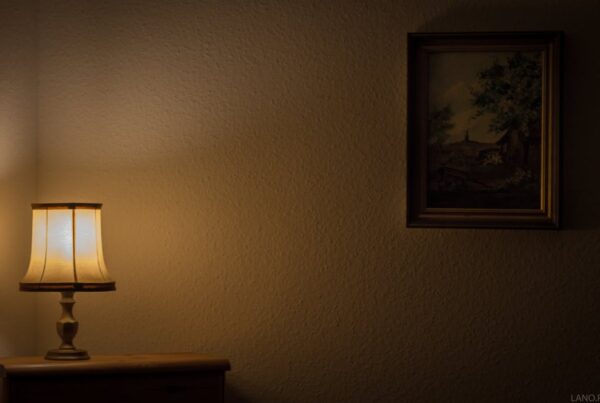2020 was a difficult year and 2021 isn’t, thus far, seeming much different. Understanding mental illnesses can help a lot when it comes to dealing with and helping sufferers. Bipolar is one of the most stigmatized of all the mental illnesses. Sufferers are often misunderstood and thought to be dangerous to themselves and others.
Though bipolar disorder’s severe depressive episodes may lead in some cases to suicide attempts, the disorder is not characterized by causing harm to any other person. On the other end of the spectrum, some people interpret bipolar as being simply more severe mood swings. But this is not the case, ‘mood swings’ in bipolar are fast, extreme, and unmanageable. It is not just about feeling down and then coming out of it and feeling happy. Rather, these are severe extremes. Sufferers will struggle to get out of bed during depressive episodes and during manic episodes, may be completely unable to sleep.
Why is de-stigmatizing bipolar so important?
The short answer is that it’s widely misunderstood. The issue of the stigmatism that surrounds bipolar is mostly due to a lack of understanding of the disease. The problem with bipolar disorder is that it impacts every aspect of a person’s life. Everything from work to relationships is impacted by it. It can also have a huge impact on the everyday productivity of a sufferer.
It also rarely diagnosed by itself and is often accompanied by depression and anxiety. Another problem when it comes to understanding bipolar is that it’s different for everyone. It’s extremely unlikely that any two sufferers will experience it in the same way. The more that people understand the disease, the more likely they are to be less scared of it and more able to help the people in their lives who may be suffering from it.
What is bipolar?
As one of the most misunderstood of all the mental illnesses, it’s often demonized by those who don’t understand it. Essentially, it’s just a mental disorder that is marked by extreme shifts in mood.

Photo by Alex Green from Pexels
Typically, the moods will shift between mania and depression. Both of these are extreme states which can often be tiring both for sufferers and the people who surround them. It’s also commonly referred to as manic depression. Currently, there is no actual cure for it. However, there are many treatment options available to sufferers.
One of the major misunderstandings around bipolar is that people tend to think it’s rare. This leads to sufferers often feeling very alone and isolated after a diagnosis. However, It’s nowhere near as rare as many people think it is. In fact, 2.8 % of adults in the USA have been diagnosed with bipolar. And globally, it is estimated that around 46 million* people suffer from it. Making it the 6th most prevalent of all mental health disorders.
Types of bipolar
Many of us also tend to view bipolar as a single disorder. But it’s not, it’s actually more of an umbrella term. There are three main types – Bipolar I, Bipolar II, and Cyclothymia.
Bipolar I: Sufferers of Bipolar I will experience at least one manic episode. These manic episodes are also commonly referred to as hypomania. Hypomania and extreme depressive episodes can fall both before and after a manic episode. It affects both men and women equally and is not more or less severe in either gender.
Bipolar II: It’s characterized by a single major depressive episode that lasts for at least two weeks. This is followed by a hypomanic episode that typically lasts for around four days. This type of bipolar is more prevalent in women than in men.
Cyclothymia: Sufferers of this type of bipolar will have episodes of hypomania which are followed by episodes of depression. Hypomania is a severely heightened mood that is typified by excessive happiness, excitability, or particularly exuberant behavior. However, in the case of cyclothymia, these symptoms are shorter-lived than those of bipolar I and II.
You are not alone
Many people with bipolar can tend to feel isolated because people tend not to talk about it as openly as they do about other mental health conditions. But it isn’t

Image courtesy of Demi Lovato on Instagram
a rare disorder at all and there are many celebrities who also suffer from it. Singer Mariah Carey was diagnosed with bipolar disorder in 2001 and told People Magazine that she felt isolated for years and felt as though she could not speak about it because of the stigma attached.
Bebe Rexha, who co-wrote The Monster with Eminem spoke out on Twitter about her bipolar diagnosis. She said in the tweet “I’m bipolar and I’m not ashamed anymore.”. Mel Gibson, Demi Lovato, Carrie Fisher, Russel Brand, Stephen Fry, Kurt Cobain, and Jimi Hendrix also suffer or, in the case of Fisher, Cobain, and Hendrix suffered, from bipolar disorder. You are not alone in your diagnosis and if you think you may be suffering from bipolar disorder, it is important to reach out to a licensed psychiatrist who can accurately diagnose you.
Signs and Symptoms
Symptoms of Mania and Hypomania
Hypomania is not as severe but is characterized by similar, if less intense, symptoms. According to Timothy J Legg, Ph.D., the symptoms of mani and hypomania may include
- Spending sprees
- Drug use
- Having unprotected sex
- Engaging in generally risky behavior
Symptoms of Depression
According to Timothy J Legg, Ph.D., the symptoms of an episode of depression may include
- Deep or severe sadness
- Hopelessness
- Lack of energy
- Lack of interest in previously enjoyable activities
- Too little or too much sleep
- Suicidal thoughts
Bipolar in women vs men
Women

Photo by Ben Blennerhassett on Unsplash
Women tend to be diagnosed later in life than men and are typically only diagnosed during their 20s or 30s. They also typically suffer much milder episodes of mania than men do, but more frequent depressive episodes. Women also experience rapid cycling, which means that they experience more than four episodes a year of mania and depression. They are also more likely to develop diseases associated with bipolar such as thyroid disease, obesity, anxiety disorders, and migraines. There is also a higher risk of them developing alcohol dependency than there is for men.
Men
Unlike women, men are usually diagnosed much earlier in life; usually in their teens or early 20s. They tend to experience more severe episodes of mania and depression and often struggle with associated substance abuse. Men are also more likely to act out during manic episodes and engage in risky behaviors than women.
Common myths about Bipolar disorder
Mood swings indicate bipolar disorder
Just because you are experiencing mood swings does not necessarily indicate bipolar. Experiencing highly changeable moods is a common part of the human experience. We are emotional beings and most of us experience mood swings on a daily basis. Rather, it’s identified by how violent and severe these mood swings are. Mood swings experienced by bipolar sufferers are extreme and unmanageable. During episodes of mania, sufferers often engage in particularly risky activity and can go for days on end without sleeping.
Mania is fun
Manic episodes are not fun and can, in severe cases, even lead to hospitalization. Manic episodes are not euphoric or indeed positive. Symptoms of mania include extreme irritability and psychotic symptoms which can include delusions, impulsive, erratic, or even dangerous behavior.
People with bipolar are violent
Whilst the symptoms of bipolar disorder do include mania, impulsivity, and irritability, this does not automatically equate to violence. These symptoms  might make sufferers feel more aggressive and agitated but it’s unlikely that they’ll actually harm anyone. Some research has shown a link between bipolar disorder and violent crime. But, it’s widely accepted that violent behavior in sufferers comes more as a result of their surrounding environment and childhood development than from the disorder itself. Violence amongst people with bipolar is also directly linked to substance abuse associated with bipolar and other similar psychiatric conditions.
might make sufferers feel more aggressive and agitated but it’s unlikely that they’ll actually harm anyone. Some research has shown a link between bipolar disorder and violent crime. But, it’s widely accepted that violent behavior in sufferers comes more as a result of their surrounding environment and childhood development than from the disorder itself. Violence amongst people with bipolar is also directly linked to substance abuse associated with bipolar and other similar psychiatric conditions.
Drug abuse causes bipolar disorder
It’s often associated with substance use disorders, but bipolar itself does not come as a direct result of drug use. Often drugs and banned substances produce some of the symptoms which are most commonly associated with bipolar disorder. This includes mania and partaking in high-risk behavior as a result of that mania. However, these symptoms are a direct result of the drug or substance and are, thus, not linked to bipolar disorder at all.
When symptoms abate, you can stop the medication
Medication must not be discontinued unless it is on the advice of a medical professional. Once the symptoms of bipolar abate, it can seem like the medication is no longer working and is thus unnecessary. However, this is an indication that you are on the correct medication at the correct dosage. The medication is designed to stabilize the mood and reduce the prevalence of depressive and manic episodes. Adhering to your treatment and taking your medication is vital when it comes to the treatment of bipolar disorder.
Bipolar in the workplace
 There is a common misconception that people with bipolar cannot hold down a normal job. There is, however, no scientific evidence to suggest that this is true at all. In general, people these days are a lot more open about mental health and will likely inform their colleagues. However, legally, you do not have to disclose your illness to your boss or the company you work for. This is true of any mental disorder or illness. As long as you aren’t putting the other people who work there at risk.
There is a common misconception that people with bipolar cannot hold down a normal job. There is, however, no scientific evidence to suggest that this is true at all. In general, people these days are a lot more open about mental health and will likely inform their colleagues. However, legally, you do not have to disclose your illness to your boss or the company you work for. This is true of any mental disorder or illness. As long as you aren’t putting the other people who work there at risk.
You can contact SADAG (the South African Depression and Anxiety Group), Africa’s largest mental health support and advocacy group, who can offer assistance. Call the 24-hour helpline on 0800 456 789.
*Statistics correct as of most recent study conducted in 2017 and published by Ritchie, H, and Roser, M in 2018 for https://ourworldindata.org/mental-health
References:
https://ourworldindata.org/mental-health
https://www.therecoveryvillage.com/mental-health/bipolar-disorder/related/bipolar-myths/
https://www.verywellmind.com/what-is-hypomania-how-is-it-diagnosed-380313
https://www.healthline.com/health/bipolar-disorder#What-is-bipolar-disorder?
https://mhanational.org/blog/7-reasons-why-world-bipolar-day-important
https://www.healthline.com/health/bipolar-and-work#legal-rights
https://www.webmd.com/bipolar-disorder/ss/slideshow-celebrities-bipolar-disorder
2020 was a difficult year and 2021 isn’t, thus far, seeming much different. Understanding mental illnesses can help a lot when it comes to dealing with and helping sufferers. Bipolar is one of the most stigmatized of all the mental illnesses. Sufferers are often misunderstood and thought to be dangerous to themselves and others.
Though bipolar disorder’s severe depressive episodes may lead in some cases to suicide attempts, the disorder is not characterized by causing harm to any other person. On the other end of the spectrum, some people interpret bipolar as being simply more severe mood swings. But this is not the case, ‘mood swings’ in bipolar are fast, extreme, and unmanageable. It is not just about feeling down and then coming out of it and feeling happy. Rather, these are severe extremes. Sufferers will struggle to get out of bed during depressive episodes and during manic episodes, may be completely unable to sleep.
Why is de-stigmatizing bipolar so important?
The short answer is that it’s widely misunderstood. The issue of the stigmatism that surrounds bipolar is mostly due to a lack of understanding of the disease. The problem with bipolar disorder is that it impacts every aspect of a person’s life. Everything from work to relationships is impacted by it. It can also have a huge impact on the everyday productivity of a sufferer.
It also rarely diagnosed by itself and is often accompanied by depression and anxiety. Another problem when it comes to understanding bipolar is that it’s different for everyone. It’s extremely unlikely that any two sufferers will experience it in the same way. The more that people understand the disease, the more likely they are to be less scared of it and more able to help the people in their lives who may be suffering from it.
What is bipolar?
As one of the most misunderstood of all the mental illnesses, it’s often demonized by those who don’t understand it. Essentially, it’s just a mental disorder that is marked by extreme shifts in mood.

Photo by Alex Green from Pexels
Typically, the moods will shift between mania and depression. Both of these are extreme states which can often be tiring both for sufferers and the people who surround them. It’s also commonly referred to as manic depression. Currently, there is no actual cure for it. However, there are many treatment options available to sufferers.
One of the major misunderstandings around bipolar is that people tend to think it’s rare. This leads to sufferers often feeling very alone and isolated after a diagnosis. However, It’s nowhere near as rare as many people think it is. In fact, 2.8 % of adults in the USA have been diagnosed with bipolar. And globally, it is estimated that around 46 million* people suffer from it. Making it the 6th most prevalent of all mental health disorders.
Types of bipolar
Many of us also tend to view bipolar as a single disorder. But it’s not, it’s actually more of an umbrella term. There are three main types – Bipolar I, Bipolar II, and Cyclothymia.
Bipolar I: Sufferers of Bipolar I will experience at least one manic episode. These manic episodes are also commonly referred to as hypomania. Hypomania and extreme depressive episodes can fall both before and after a manic episode. It affects both men and women equally and is not more or less severe in either gender.
Bipolar II: It’s characterized by a single major depressive episode that lasts for at least two weeks. This is followed by a hypomanic episode that typically lasts for around four days. This type of bipolar is more prevalent in women than in men.
Cyclothymia: Sufferers of this type of bipolar will have episodes of hypomania which are followed by episodes of depression. Hypomania is a severely heightened mood that is typified by excessive happiness, excitability, or particularly exuberant behavior. However, in the case of cyclothymia, these symptoms are shorter-lived than those of bipolar I and II.
You are not alone
Many people with bipolar can tend to feel isolated because people tend not to talk about it as openly as they do other mental health conditions. But it isn’t

Image courtesy of Demi Lovato on Instagram
a rare disorder at all and there are many celebrities who also suffer from it. Singer Mariah Carey was diagnosed with bipolar disorder in 2001 and told People Magazine that she felt isolated for years and felt as though she could not speak about it because of the stigma attached.
Bebe Rexha, who co-wrote The Monster with Eminem spoke out on Twitter about her bipolar diagnosis. She said in the tweet “I’m bipolar and I’m not ashamed anymore.”. Mel Gibson, Demi Lovato, Carrie Fisher, Russel Brand, Stephen Fry, Kurt Cobain, and Jimi Hendrix also suffer or, in the case of Fisher, Cobain, and Hendrix suffered, from bipolar disorder. You are not alone in your diagnosis and if you think you may be suffering from bipolar disorder, it is important to reach out to a licensed psychiatrist who can accurately diagnose you.
Signs and Symptoms
Symptoms of Mania and Hypomania
Hypomania is not as severe but is characterized by similar, if less intense, symptoms. According to Timothy J Legg, Ph.D., the symptoms of mani and hypomania may include
- Spending sprees
- Drug use
- Having unprotected sex
- Engaging in generally risky behavior
Symptoms of Depression
According to Timothy J Legg, Ph.D., the symptoms of an episode of depression may include
- Deep or severe sadness
- Hopelessness
- Lack of energy
- Lack of interest in previously enjoyable activities
- Too little or too much sleep
- Suicidal thoughts
Bipolar in women vs men
Women

Photo by Ben Blennerhassett on Unsplash
Women tend to be diagnosed later in life than men and are typically only diagnosed during their 20s or 30s. They also typically suffer much milder episodes of mania than men do but more frequent depressive episodes. Women also experience rapid cycling, which means that they experience more than four episodes a year of mania and depression. They are also more likely to develop diseases associated with bipolar such as thyroid disease, obesity, anxiety disorders, and migraines. There is also a higher risk of them developing alcohol dependency than there is for men.
Men
Unlike women, men are usually diagnosed much earlier in life; usually in their teens or early 20s. They tend to experience more severe episodes of mania and depression and often struggle with associated substance abuse. Men are also more likely to act out during manic episodes and engage in risky behaviors than women.
Common myths about Bipolar disorder
Mood swings indicate bipolar disorder
Just because you are experiencing mood swings, does not necessarily indicate bipolar. Experiencing highly changeable moods is a common part of the human experience. We are emotional beings and most of us experience mood swings on a daily basis. Rather, it’s identified by how violent and severe these mood swings are. Mood swings experienced by bipolar sufferers are extreme and unmanageable. During episodes of mania, sufferers often engage in particularly risky activity and can go for days on end without sleeping.
Mania is fun
Manic episodes are not fun and can, in severe cases even lead to hospitalization. Manic episodes are not euphoric or indeed positive. Symptoms of mania include extreme irritability and psychotic symptoms which can include delusions and impulsive, erratic, or even dangerous behavior.
People with bipolar are violent
Whilst the symptoms of bipolar disorder do include mania, impulsivity, and irritability, this does not automatically equate to violence. These symptoms  might make sufferers feel more aggressive and agitated but it’s unlikely that they’ll actually harm anyone. Some research has shown a link between bipolar disorder and violent crime. But, it’s widely accepted that violent behavior in sufferers comes more as a result of their surrounding environment and childhood development than from the disorder itself. Violence amongst people with bipolar is also directly linked to the substance abuse associated with bipolar and other similar psychiatric conditions.
might make sufferers feel more aggressive and agitated but it’s unlikely that they’ll actually harm anyone. Some research has shown a link between bipolar disorder and violent crime. But, it’s widely accepted that violent behavior in sufferers comes more as a result of their surrounding environment and childhood development than from the disorder itself. Violence amongst people with bipolar is also directly linked to the substance abuse associated with bipolar and other similar psychiatric conditions.
Drug abuse causes bipolar disorder
It’s often associated with substance use disorders but bipolar itself does not come as a direct result of drug use. Often drugs and banned substances produce some of the symptoms which are most commonly associated with bipolar disorder. This includes mania and partaking in high-risk behavior as a result of that mania. However, these symptoms are a direct result of the drug or substance and are, thus, not linked to bipolar disorder at all.
When symptoms abate, you can stop the medication
Medication must not be discontinued unless it is on the advice of a medical professional. Once the symptoms of bipolar abate, it can seem like the medication is no longer working and is thus unnecessary. However, this is an indication that you are on the correct medication at the correct dosage. The medication is designed to stabilize the mood and reduce the prevalence of depressive and manic episodes. Adhering to your treatment and taking your medication is vital when it comes to the treatment of the bipolar disorder.
Bipolar in the workplace
 There is a common misconception that people with bipolar cannot hold down a normal job. There is, however, no scientific evidence to suggest that this is true at all. In general, people these days are a lot more open about mental health and will likely inform their colleagues. However, legally, you do not have to disclose your illness to your boss or the company you work for. This is true of any mental disorder or illness. As long as you aren’t putting the other people who work there at risk.
There is a common misconception that people with bipolar cannot hold down a normal job. There is, however, no scientific evidence to suggest that this is true at all. In general, people these days are a lot more open about mental health and will likely inform their colleagues. However, legally, you do not have to disclose your illness to your boss or the company you work for. This is true of any mental disorder or illness. As long as you aren’t putting the other people who work there at risk.
You can contact SADAG (the South African Depression and Anxiety Group), Africa’s largest mental health support and advocacy group, who can offer assistance. Call the 24-hour helpline on 0800 456 789.
*Statistics correct as of most recent study conducted in 2017 and published by Ritchie, H, and Roser, M in 2018 for https://ourworldindata.org/mental-health
References:
https://ourworldindata.org/mental-health
https://www.therecoveryvillage.com/mental-health/bipolar-disorder/related/bipolar-myths/
https://www.verywellmind.com/what-is-hypomania-how-is-it-diagnosed-380313
https://www.healthline.com/health/bipolar-disorder#What-is-bipolar-disorder?
https://mhanational.org/blog/7-reasons-why-world-bipolar-day-important
https://www.healthline.com/health/bipolar-and-work#legal-rights
https://www.webmd.com/bipolar-disorder/ss/slideshow-celebrities-bipolar-disorder



![women [longevity live]](https://longevitylive.com/wp-content/uploads/2020/01/photo-of-women-walking-down-the-street-1116984-100x100.jpg)










